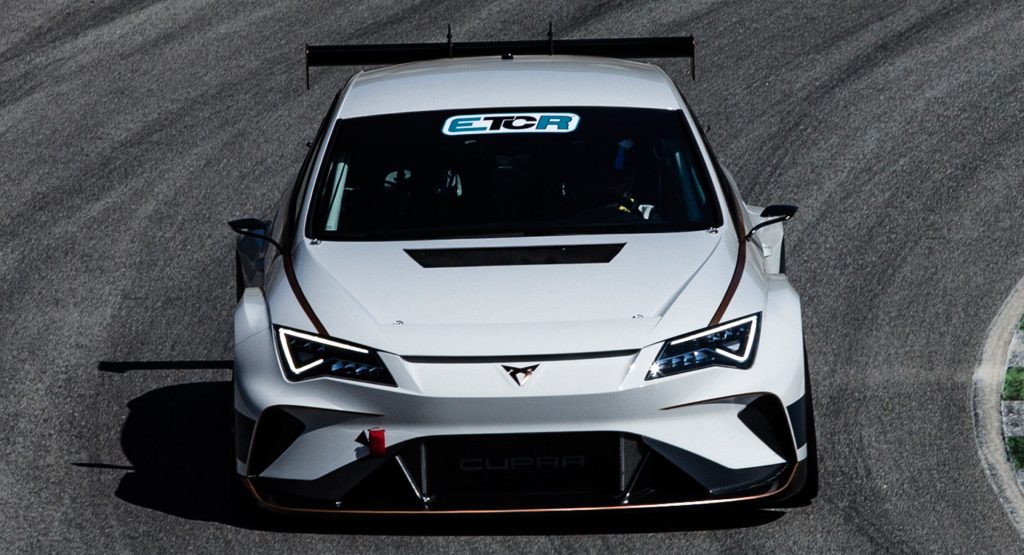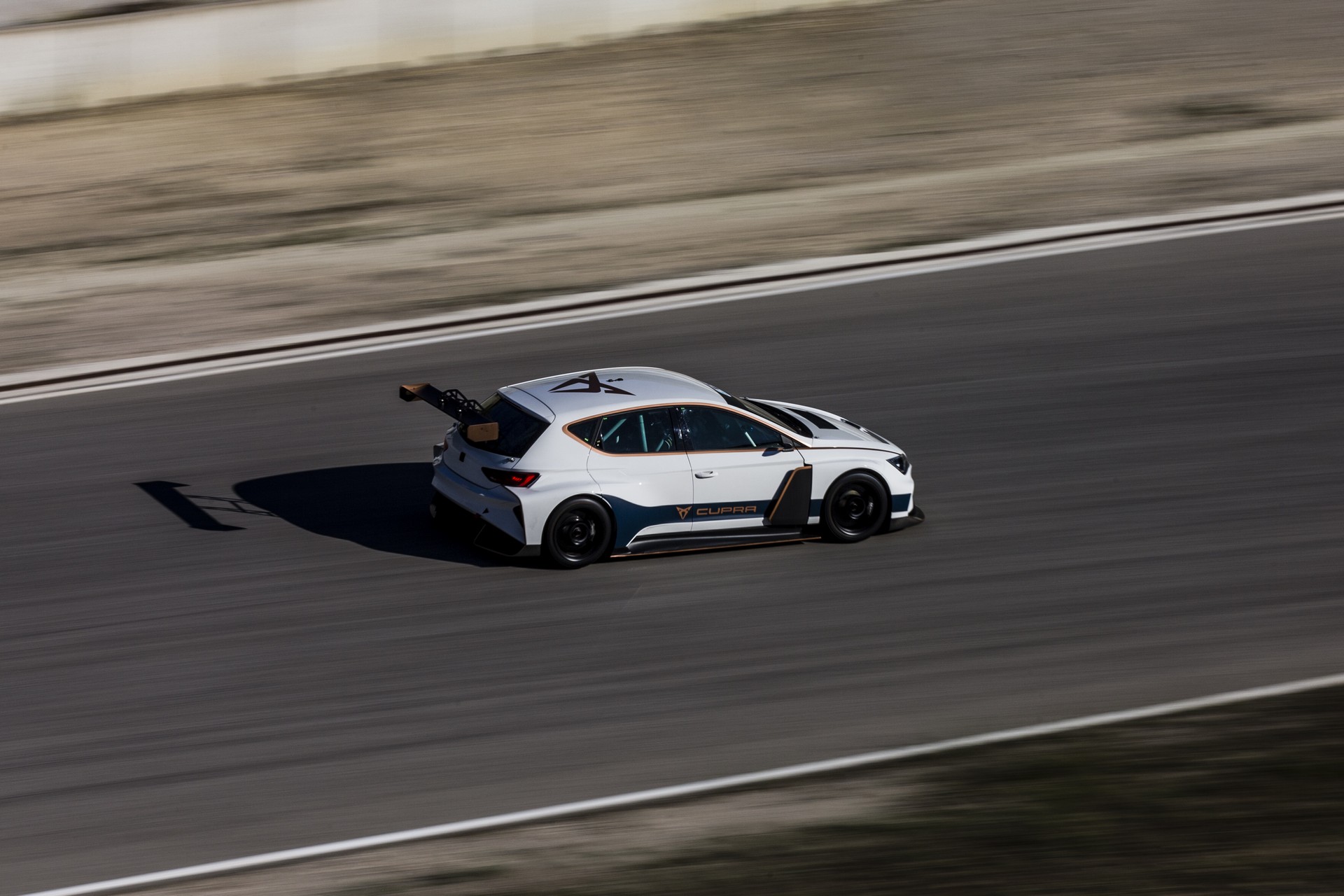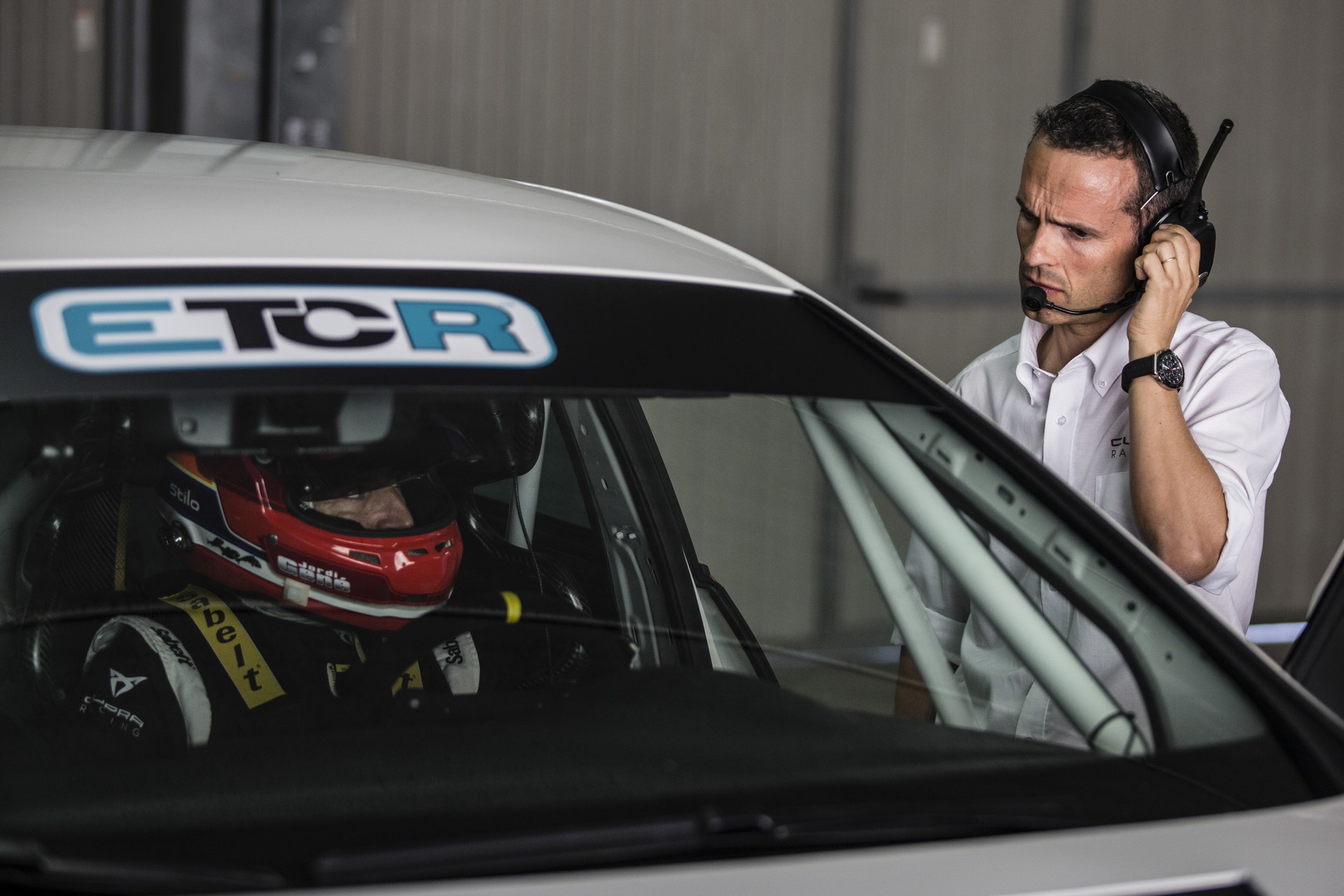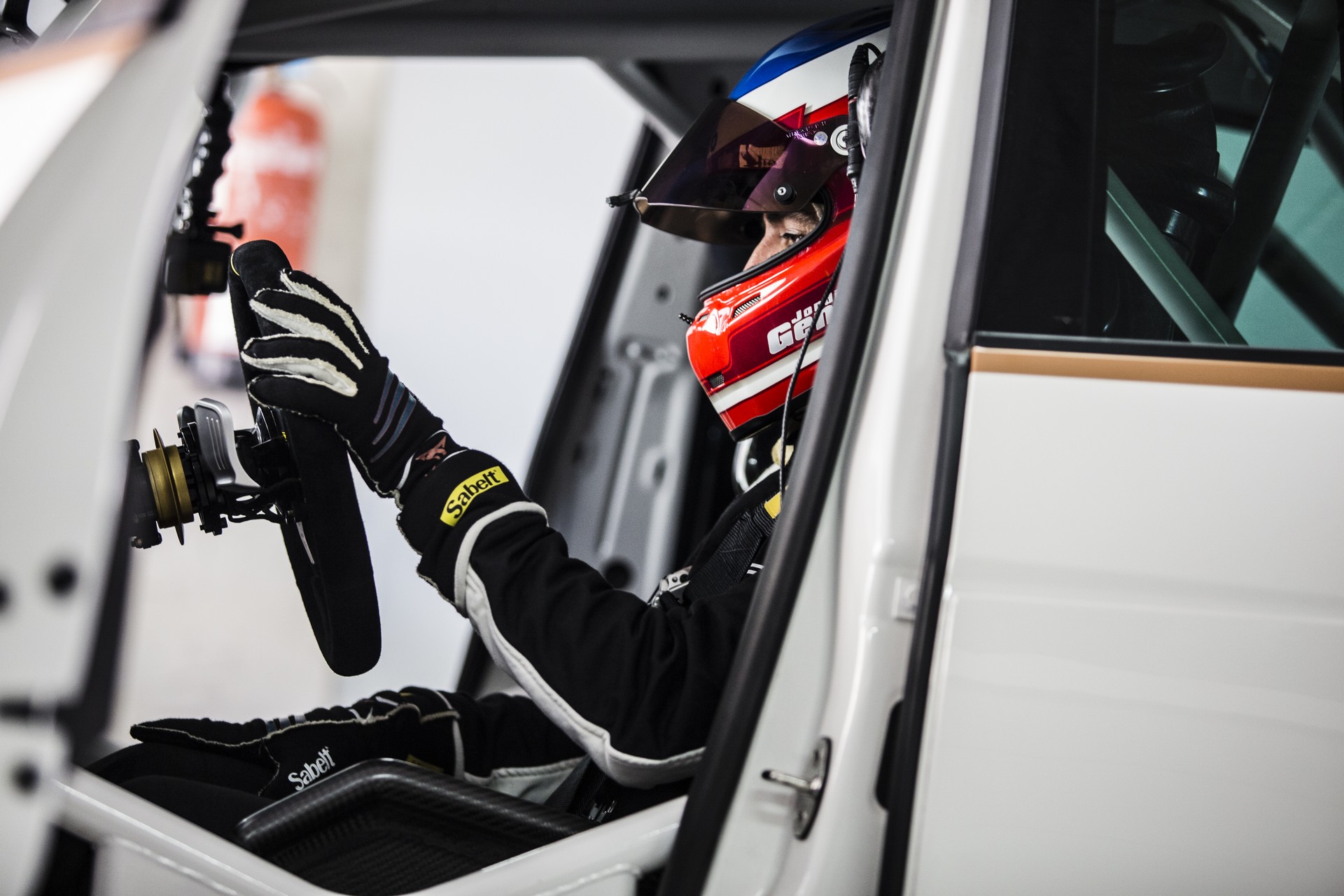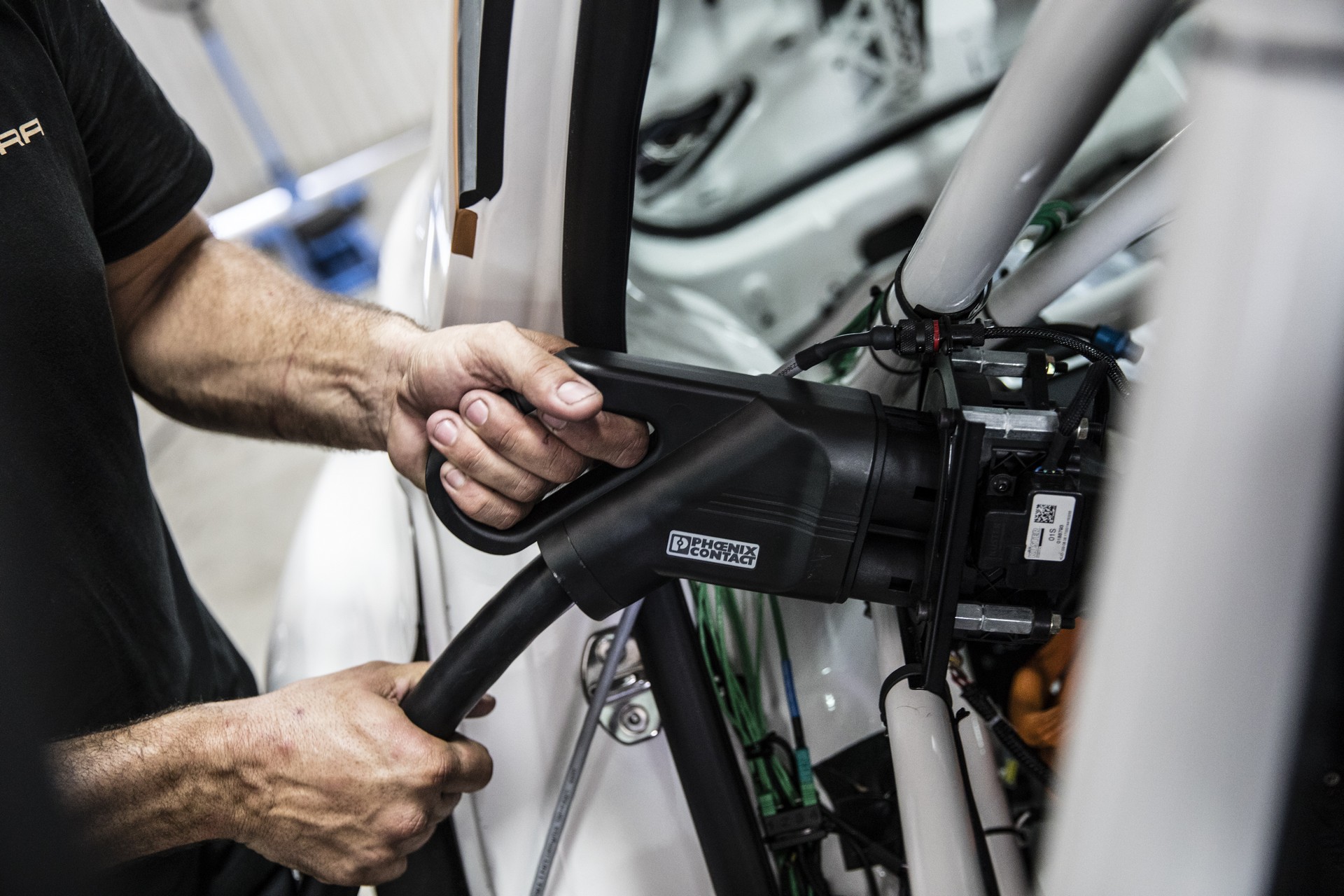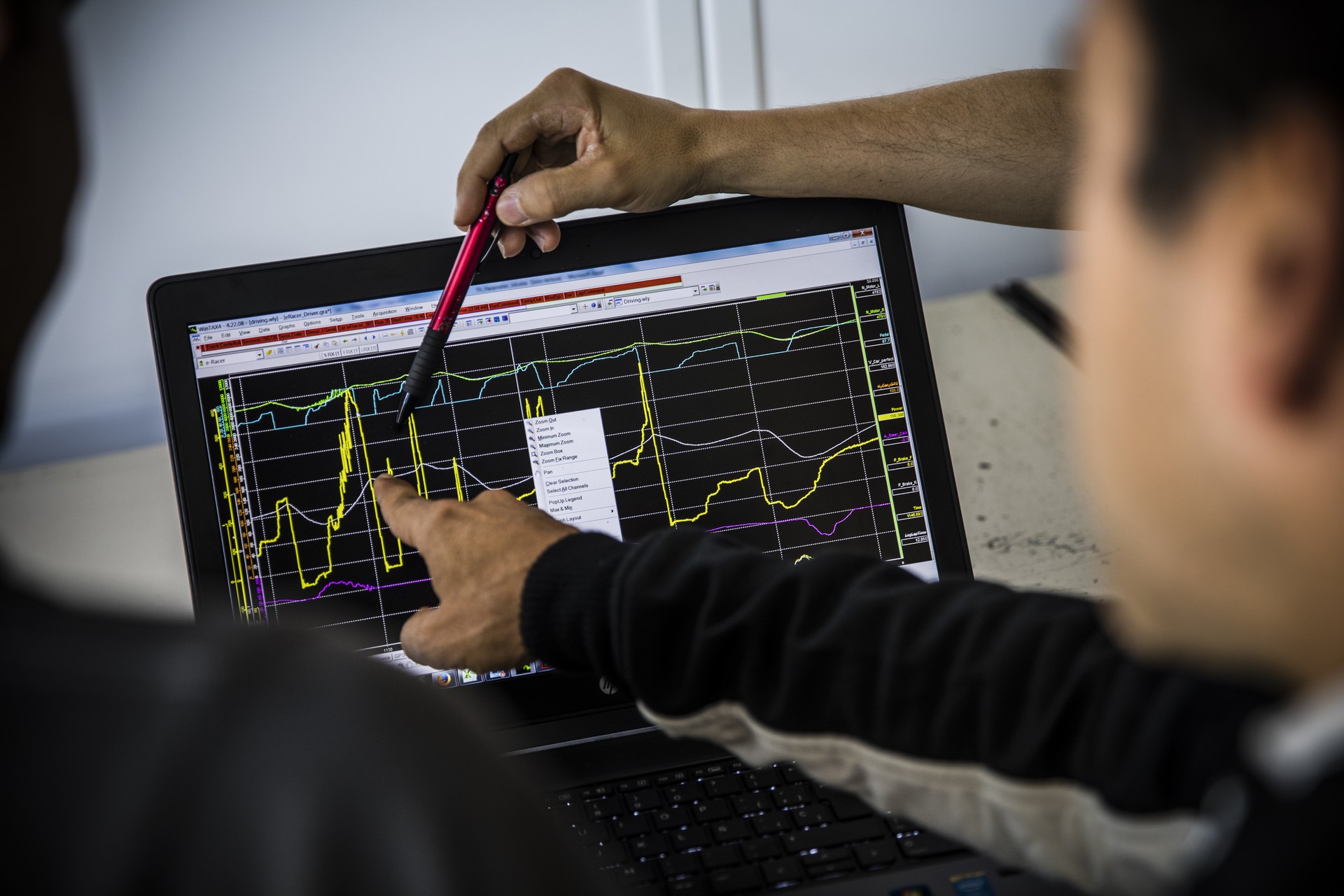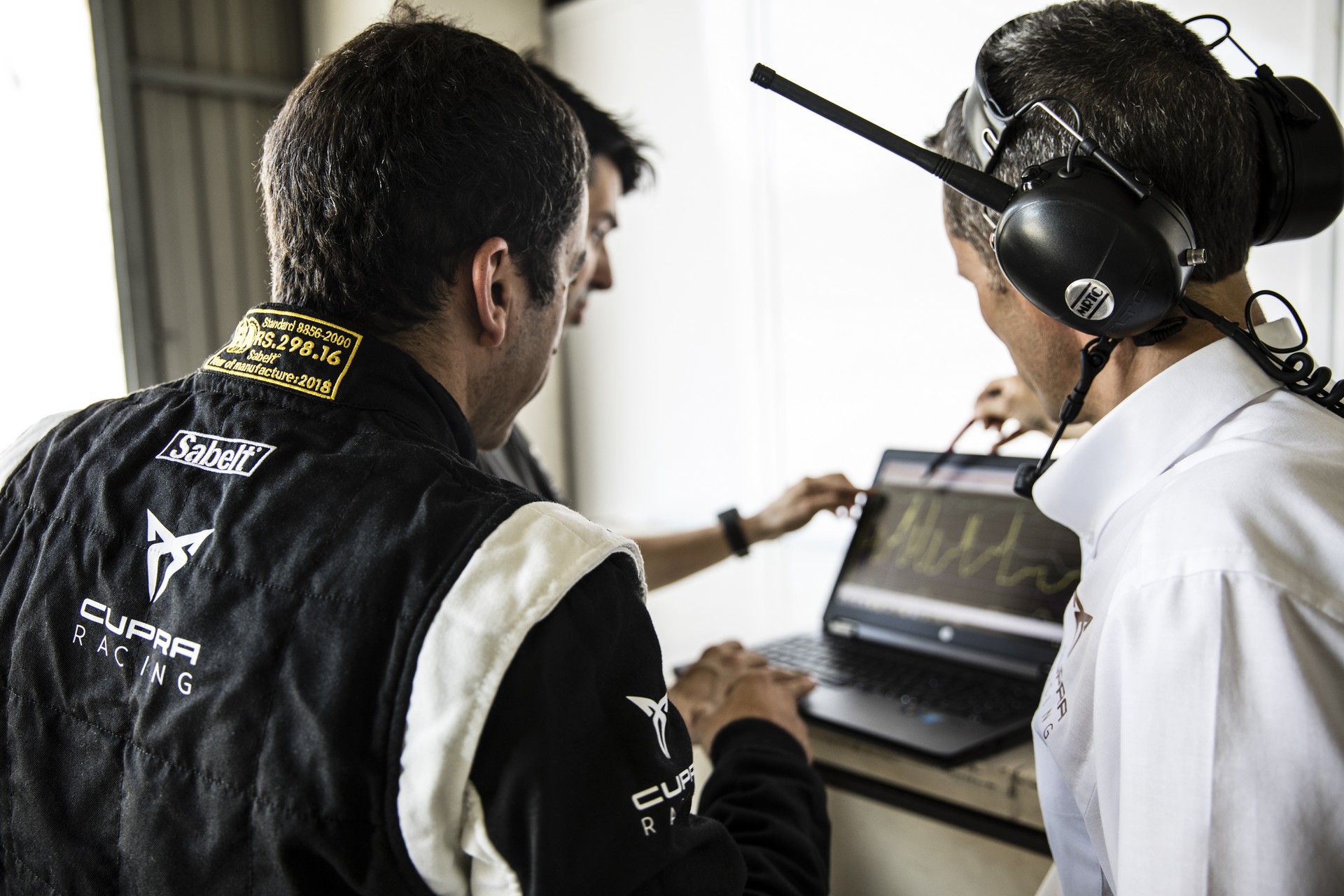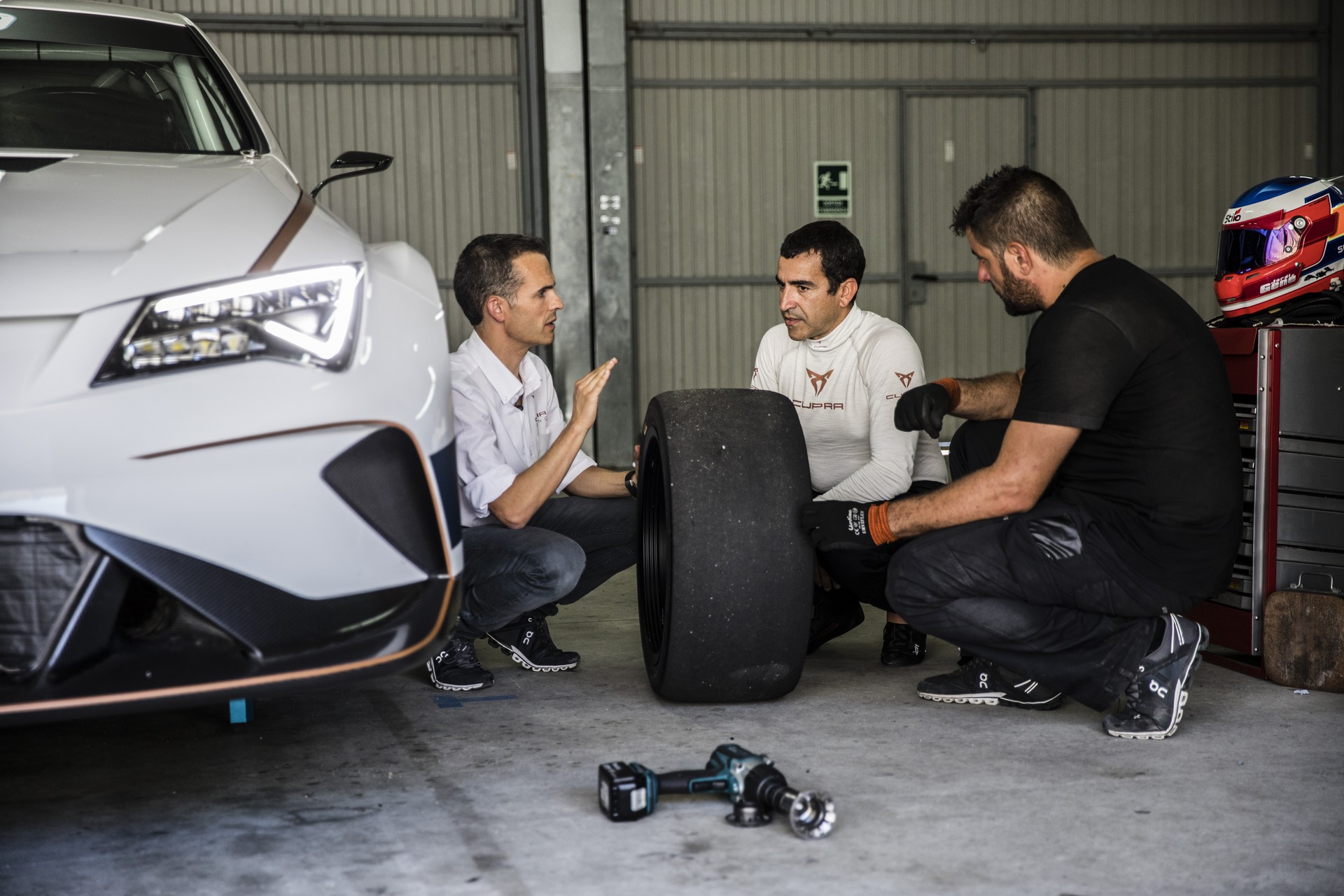Electric race cars are becoming more common, but they also bring an assortment of new and unique challenges for drivers and mechanics.
Cupra’s e-Racer, in particular, is a bit of an oddity as it’s a high-tech electric vehicle which can burn though 441 lbs (200 kg) of dry ice on track days. While it sounds odd than an electric vehicle would need dry ice, Cupra uses it cool the car’s 65 kWh battery pack which weighs 992 lbs (450 kg). The cooling requirements are so important that the car has been equipped with a special indicator which warns the driver to return to the pits when the battery starts getting too warm.
Speaking of the battery, the electric powertrain causes drivers to rethink a lot of things. As Cupra driver Jordi Gené explained, “The driving style is completely different and now you have to use other parameters in order to know what speed you’re driving, how to negotiate a corner or the right time to apply the brake.” He went on to say driving the e-Racer “implies learning from scratch” as model is significantly heavier than traditional race cars and drivers can’t rely on engine sounds to know how to react.
Drivers aren’t the only ones that have to get accustomed to the new setup as mechanics use specially designed tools to work on the model. As an example, Cupra said the team uses special gloves that can resist up to 1,000 volts of electricity.
Despite the challenges, Cupra continues to test the e-Racer and expects it will make its racing debut in the ETCR category in 2020. When it arrives, the rear-wheel drive model should have an electric powertrain that produces 670 hp (500 kW / 680 PS) and 708 lb-ft (960 Nm) of torque. This enables the car to rocket from 0-62 mph (0-100 km/h) in 3.2 seconds before hitting a top speed of 167 mph (270 km/h).








